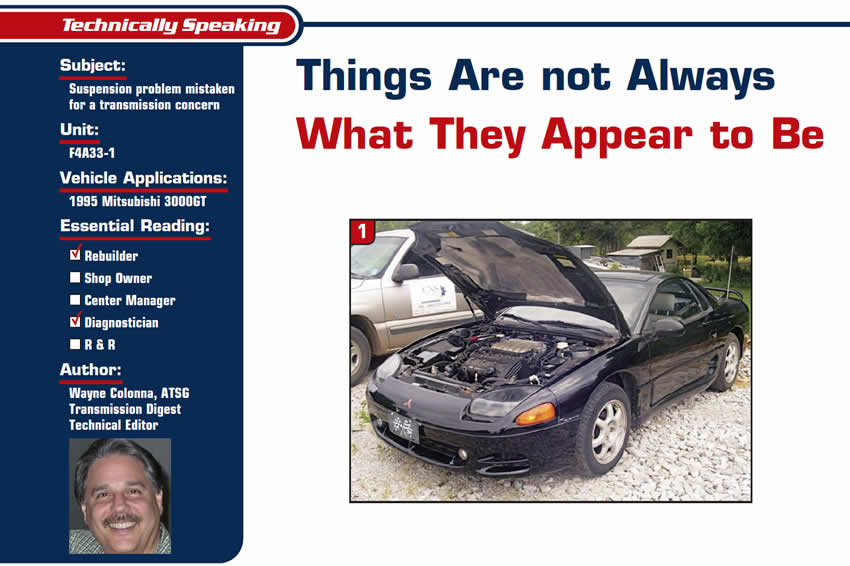Different Transmission, Same Problem?
When you install a replacement transmission and the car still has the same problem it came in for, it makes you think the problem is with the car, not the transmission. On the other hand, if you’re a shop that rebuilds “in house” and installs the same transmission that came from the car, you now face the dilemma of whether you misdiagnosed the problem or failed to resolve it in the rebuild process.
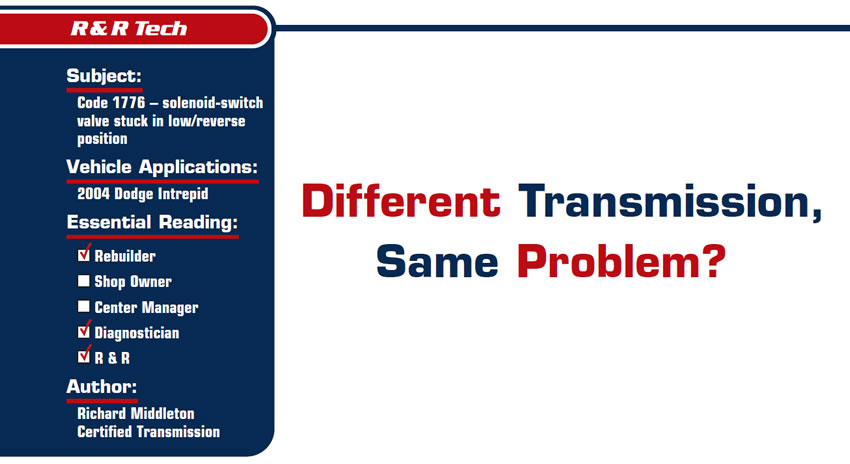
Valve-Body Reaming
When it comes to reaming valve bodies, there are always questions about how to approach things the “right” way. It pays to keep in mind that reaming a valve-body bore to allow installation of an oversized valve or sleeve is a precision operation and must be viewed with the mindset of a machinist. Properly maintained equipment, correct setup and the right cutting fluids are critical in achieving success. Here are a few suggestions we have compiled over the years in response to common inquiries.
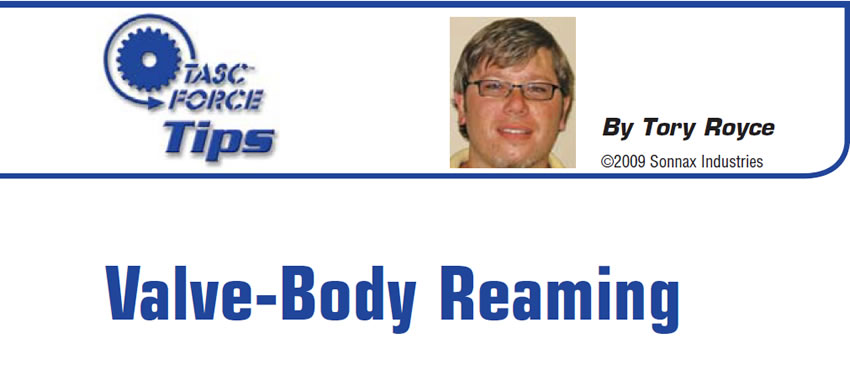
Orifice Control Within the Converter
Converter rebuilders want to know why some of the pistons have the orifice and some do not. The answer to this question begins with understanding why the orifice was used in the first place. The orifice was drilled through the piston to help cool the mass of the converter. The TCC-release passage is open to exhaust when the converter is in the TCC-apply mode. Metered oil, which is allowed to bypass the piston by way of the orifice, carries some heat away from the converter.

Cash for Clunkers
How the bill works is that people who trade in a clunker will receive a voucher worth $3,500 or $4,500 toward the purchase of a new “more fuel-efficient” car or truck. The new vehicle must have a minimum fuel economy of 22 mpg to qualify for the voucher. If the new car’s fuel efficiency is improved by at least 4 mpg compared with their previous car, the consumer will receive a $3,500 voucher. If the new car’s fuel efficiency is improved by at least 10 mpg, the consumer will receive a $4,500 voucher.
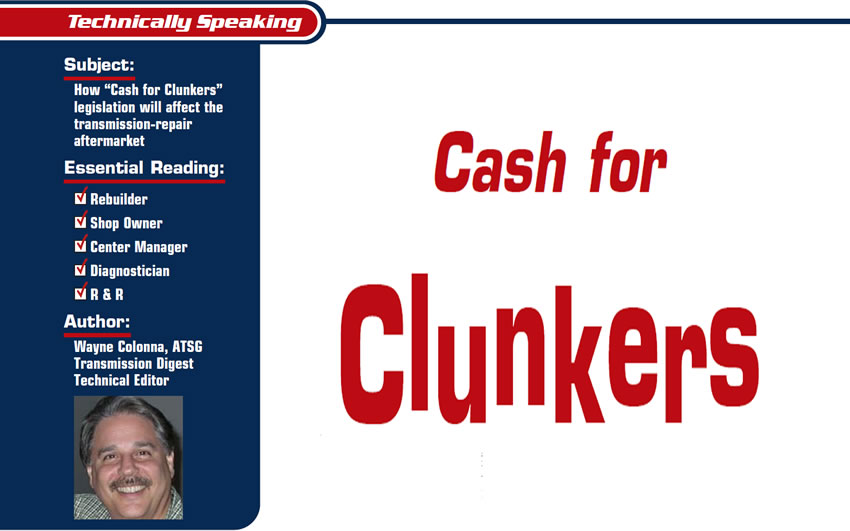
Simple Tips for Technicians
During certain lessons in our training facility, we impart many tips and tricks to our students. Often simple and always handy, these useful “nuggets” reduce headaches, save money and keep us safer. I’ve accumulated these tips during the 15 years that I worked as a full-time technician as well as during the 14 years that I’ve been an automotive instructor. Over the course of my automotive-service career, I have been fortunate to pick up many of these helpful hints from forums, fellow technicians and publications.

August 2009 Issue
Issue Summary:
In a vehicle equipped with an Allison MT545, shifts are either too soft or too harsh, and the friction plates may be burned.
A vehicle with an Allison MT545 returns with a leak from the front of the transmission and a slight vibration at higher engine speeds.
Before or after overhaul, a GM vehicle equipped with an Allison 1000/2000 transmission may have no upshifts, and code P0708 is stored.
A GM vehicle equipped with an Allison 1000/2000 transmission neutralizes at highway speeds, and code P0735 is stored.
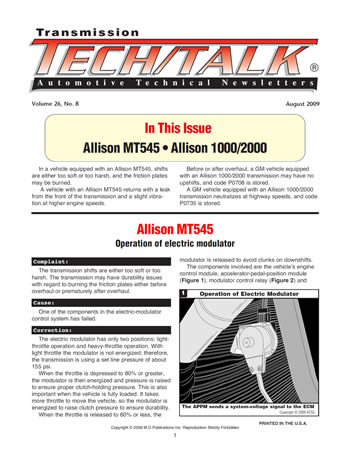
Up to Standards
The two most-glaring issues start with “captive product.” The auto manufacturers of today have become efficient by building fewer of the components that go into the complex and sophisticated product that is today’s automobile. Tier 1 suppliers provide many components that go into the car. Although the car manufacturer may make the sheet metal and engines and be responsible for the design and process engineering to produce the vehicle, Tier 1 suppliers like BorgWarner, Tremec, Aisin, ZF, New Venture Gear, American Axle, Dana and Eaton manufacture the transmissions, transfer cases and differentials for the driveline. Other companies produce the interiors, steering, HVAC, fuel injection and other components.
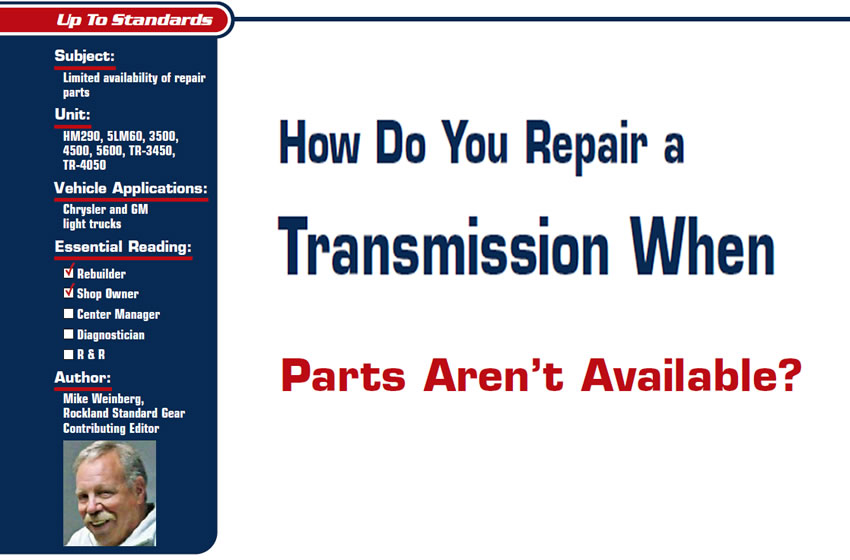
Making Use of Wiring Diagrams to Troubleshoot
We have found the wiring diagrams of a transmission to be a very useful tool in figuring out how it is designed to work electrically. This information can help narrow down the problem when we are dealing with an electrical malfunction.
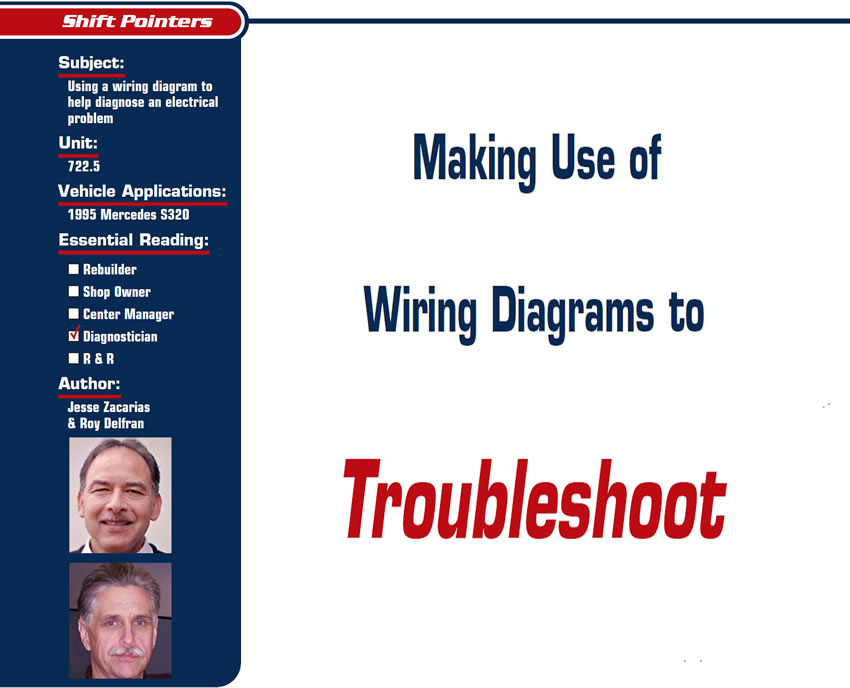
Never Underestimate the Value of an Excellent Credit Rating
When the sales manager checked my credit score his eyes lit up, but only for a moment. He could see that I easily qualified from that angle, but there was one more consideration, a new wrinkle in lending. It’s called the “debt-to-income ratio” (OK, maybe it’s not so new, but lots of lenders have been ignoring it for a long time). Aside from your having a good rating they now want to make sure that taking on the burden of additional debt isn’t going to bury people. So now lenders want to know about your credit-card debt and your mortgage payment if you own a home or how much your rent is if you don’t. They want to know about education loans, other vehicle loans and any other encumbrances. Of course, they also want to know your present income and sometimes that of others in the household.

July 2009 Issue
Issue Summary:
A 2000-up Nissan vehicle with the RE4R01A or RE4F04A has a complaint of a slightly delayed 1-2 upshift and a quick over-speed or cut-loose on the 2-3 shift.
A Subaru vehicle with the 4-EAT-Phase II may exhibit a slight delayed forward engagement and will have no reverse. When the engine is shut off the vehicle lurches backward.
A Mitsubishi vehicle with the F4A51 transaxle has no forward movement when the headlamps are turned on.
Before or after overhaul, a Nissan/Infiniti with the RE5R05A may exhibit various upshift complaints.
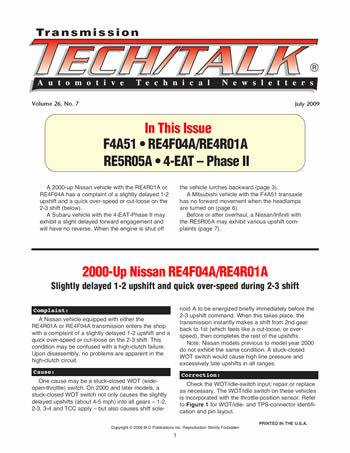
Change May Be Good – But Be Careful
In the following situations each converter builder made what he believed to be a single change. For each of them, the change did not seem to cause any problems at first. Unfortunately, devastating long-term consequences occurred in both situations because they failed to realize that they had made more than one change.
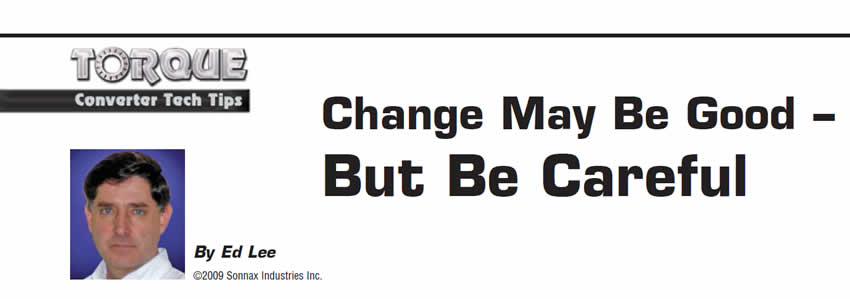
Things Are not Always What They Appear to Be
Unfortunately for the owner this exchanged unit did not work correctly. Since the facility did not do transmission work the owner took the car to Chris Colucci at CNS Transmissions in Walnut, Miss. Chris saw that the vehicle was in a failsafe condition with lights blinking on the dash. The DTCs he extracted revealed gear-ratio-error problems. Upon learning that the transmission had been replaced, he put 2 and 2 together and realized that they might have installed a transmission with an incorrect ratio.
